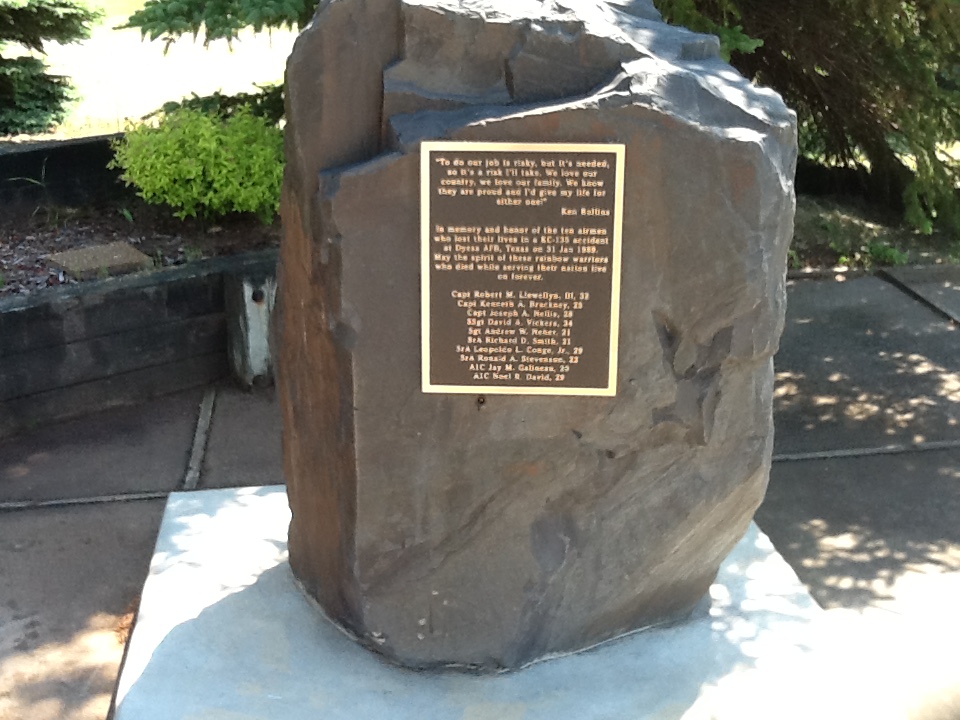
The Crew E180 memorial was established to commemorate crew members who were stationed at KI Sawyer that lost their lives after an accident at Dyess AFB in Texas in January 1989. This memorial consists of a boulder with a plaque on it. The plaque is inscribed with the names of those airmen who were on the flight. There were 17 people who originated from KI Sawyer and two who boarded at Dyess. [6] Additionally, there is an inscription referring to trees that had been planted around the boulder for each of the airman who died in the accident. After KI Sawyer AFB closed down, the original area where the memorial was had fallen into disrepair. In 2015 there was revitalization that was done to move and update it to ensure the continued remembrance of the accident.
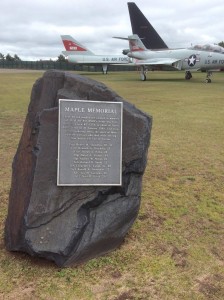
The accident occurred at Dyess AFB while the plane was taking off to the Pacific with a planned refuel mission on the way. The aircraft, a Boeing KC–135A-BN Stratotanker, experienced technical difficulties from take-off. When the water-injection system failed during take-off. [4] This led to the aircraft getting slightly off the ground, clipping a house with a wing, and then coming down engulfed in flame and smoke. In an article by the New York Times, one witness said, “Engines were backfiring and missing. It curved off to the left and crashed. And then I saw the ball of smoke and fire go up.” [6] There were 7 crew members and 12 passengers aboard. 10 of the 19 people on board were airmen from KI Sawyer. Additionally, there were military spouses and retired military members on board. [6] In Marquette, the 10 airmen who served there are recognized in the memorial.
Historical Context
Technologically, the Boeing KC–135A-BN Stratotanker was designed for aerial refueling and used by the Strategic Air Command (SAC) based on the prototype Dash 80 which also led to the development of the Boeing 707. The KC–135 was a replacement of the KC–97, which was an outdated propeller, powered tanker that was unable to keep up with jet fighters and bombers. The technology was indicative of the conversion of airplanes to jet power. [8] The first KC–135 tanker was rolled out in Renton, Washington in 1956 and at the public unveiling on July 18, 1956, there was also a nod to the past. “The last KC–97 – the world’s first production aerial tanker and last production piston-powered airplanes Boeing built – was rolled out as well.” [8] 1965 marked the end of production of the KC–135, with 803 aircraft having been made in a ten-year period. Currently the KC–135s still in use will be phased out to be replaced by Boeing KC – 46 Pegasus aircrafts. [8] As of 2006, there was about 500 of the tankers still in service, with upgrades necessarily occurring throughout their lifecycles as technology advanced further.
KI Sawyer was established in Michigan’s Upper Peninsula as an air force base officially in 1955. The base covered 5,200 acres and provided jobs to local civilians as well as development in the community and its economy. At KI Sawyer, the first KC – 135A arrived after the assignment of the 923rd Air Refueling Squadron in August 1960. The 923rd became the 46th Air Refueling Squadron shortly after. Following this in 1963, the 46th Air Refueling Squadron was assigned to the 410th Bombardment Wing. In 1964, KI Sawyer was switched from the control of the Air Defense Command to the Strategic Air Command. The air force base was officially inactivated on September 30, 1995 after ceremonies in June and August. [9]
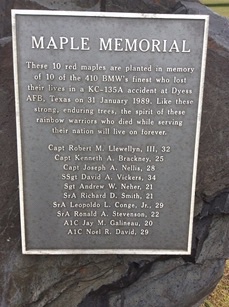
Originally, the memorial was surrounded by new maple trees. The memorial was erected as a stone with an inscribed plaque recognizing the airmen who died during the accident. However, with the closure of the base, the site and the memorial fell into disrepair. Most of the trees had not survived the Marquette winters and the memorial itself was neglected.[2] On 31 January 2015, 26 years after the accident, Scott Harris, CMSgt USAF (Ret), who had been stationed at KI Sawyer when the accident took place, launched an online crowdfunding campaign to update and move the memorial to a place where it would be among other memorials to better take care of it. The update of the memorial included a change to the inscription on the plaque and the movement of the memorial. [2]
Memorials and History
Military memorials are part of a long history relating to the commemoration of people that have given their lives for the greater good. There are examples of military memorials throughout world history. There are utilitarian, social, and sentimental values placed in the creation and dedication of military memorials. They can be used as a sacred or non-sacred place for remembrance and reflection. [10] People who establish memorials could also be doing so for other reasons such as educating the public, especially younger generations who might not have experienced the event or known the people who were involved. As historians, memorials allow for different historical interpretations of an event or people who are being memorialized. The historical interpretations that come out of studying memorials could give the historian a look at the public opinion and interpretation of an event rather than the academic retelling or interpretation of it.
Military memorials are an important part of our social constructions of dealing with loss and tragedy. In “War Memorials as Political Memory,” James Mayo writes about the importance of war memorials which can be more broadly applied to all kinds of military related memorials like the Crew E-180 memorial. He writes, “War shrines and commemorative rituals historically constitute the most frequently used approaches to remembrance of past deeds and represent the most common conception of war memorials.” [10, p. 63] When members of the military, as well as civilians, do something courageous or die in service to the country, public opinion and especially people around the person or group argue for a service or memorialization be held for service men and women. As an extreme and well known example, after the attacks on September 11th, 2001 there were services held all over the world to commemorate the victims. Ground Zero was set up as a memorial to those people as well as ones in the Pentagon and Shanksville, PA. Though on a smaller scale, the airmen involved in the accident at Dyess AFB were memorialized by the people who lived and worked with them through a memorial where they were stationed.
Memorials are kept up by community members or employees, with Veterans of Foreign War (VFW) organizations taking responsibility for maintaining them. In other cases, there are larger bodies of government that will be responsible for the maintenance of memorials. The maintenance and the importance placed on that is reflective of a community’s sense of an event or of those people who were involved. Memorial maintenance also relates to the public memory. Referring again to the Ground Zero memorial, the attacks on September 11th, 2001 are recent attacks that have occurred and still hold personal emotions for a significant number of people. The personal relationship plus the national nature of the attack means that the memorial is well maintained. Militarily another national example is the National Mall in Washington DC. The memorials that are on the western half of the National Mall are signifying features of a national commitment to our involvement in wars. [12] Comparatively, there are plenty of memorials in small localities that focus on more local involvement and then maintained by local groups. For example, Dollar Bay, MI there’s a roll call of veterans from the Dollar Bay area that is maintained by the township and the local VFW chapter.
The Crew E-180 memorial is one of a different nature that the Ground Zero memorial or the National Mall memorials because it was not established because of an international or national conflict, but it effected a smaller number of people personally. However, it is also different from township memorials because the incident occurred as technical issues on a non-combat flight. [5] Because of these inherent differences from more traditional military memorials, the Crew E-180 memorial has relied on different ways of staying maintained. In general, the maintenance has been more difficult because of it. While KI Sawyer was an active air force base, there was regular maintenance provided by the airman stationed there. When the KI Sawyer AFB closed in 1995, this regular maintenance was no longer performed in and around the Crew E-180 memorial. Between 1995 and 2015 there were not active events or people that occurred or were around the memorial. This led to the memorial falling in to disrepair and becoming outdated. [2]
One way memorials are presented is through the planting of a tree. In an article on “The Planting of Trees as War Memorials” published in 1919, the Torrey Botanical Society said,
“…when permanent memorials to the defenders of our flag by land and sea are being considered throughout our land… we venture the suggestion that… action can effectively and economically be taken in honor of all who have served or of those who have made the supreme sacrifice, by planting memorial trees.”[7, p. 34-35]
As a botanical society, there would be bias towards planting trees in general, but the idea of planting memorial trees, as was originally done at KI Sawyer for the Crew E-180 memorial, has been around since at least the early part of the twentieth century. The article continues to discuss how these types of memorials could easily be personalized and adjusted for geographical location. They would also be “appreciated for their beauty grandeur, long life, and utility.” [7, p. 35] This sentiment was echoed in the original inscription on the plaque for the Crew E-180 memorial.
The original Crew E-180 memorial plaque was placed on a large boulder and included the names of the airmen of the 410th BMW who lost their lives as a result of the accident. It was also inscribed to reflect the nature of the accident and the story of the memorial itself. It read,
“These 10 red maples are planted in memory of 10 of the 410 BMW’s finest who lost their lives in a KC–135A accident at Dyess AFB, Texas on 31 January 1989. Like these strong, enduring trees, the spirit of these rainbow warriors who died while serving their nation will live on forever.” [3]
These words acknowledged the accident that occurred, the trees that were planted, as well as noting other details about the men. The original memorial established it as a sacred memorial. As it has been revitalized, the memorial continues this sacred meaning. It is connected to the place and people to whom it means a continued remembrance and recognition of their loved ones. [1]
Conclusion
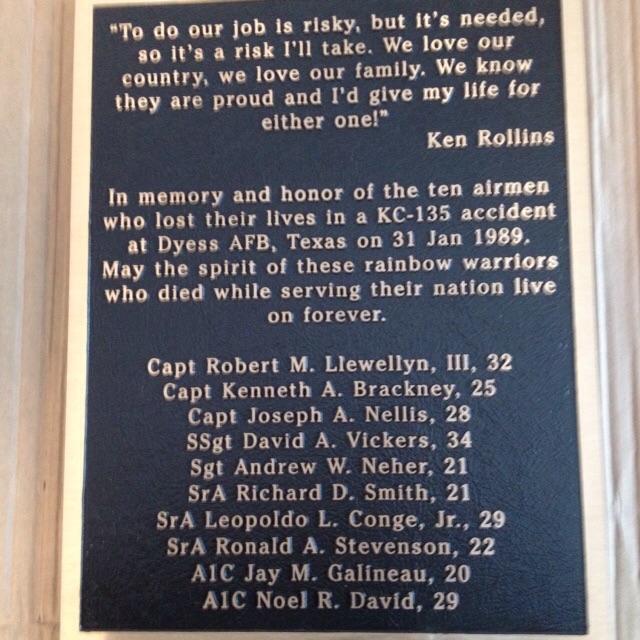
Sacred memorials enable “a place to have distinct spiritual meaning amid chaos, and this sacredness is beyond unique individual experiences.” [10, 63] The Crew E-180 memorial is an example of a sacred memorial with a utilitarian purpose in Mayo’s definitions of those terms. The memorial is sacred because it has sentimental meaning adding to the moral values associated with it. As a society, it is agreed that military service, participating in something that is larger than oneself and to serve a larger cause, is a moral and honorable thing to do. By extension, it is moral and honorable to memorialize the military members who gave their lives for this larger service and larger cause. [10] By doing so, they are granted a sentimental and moral purpose in the living memory. The living memory is in turn the utilitarian aspect of this memorial because the memorial acts as a teacher to people who have forgotten the accident or those who had not experienced it. Younger generations are thought of in these situations because these memorials teach them about the service of past individuals.
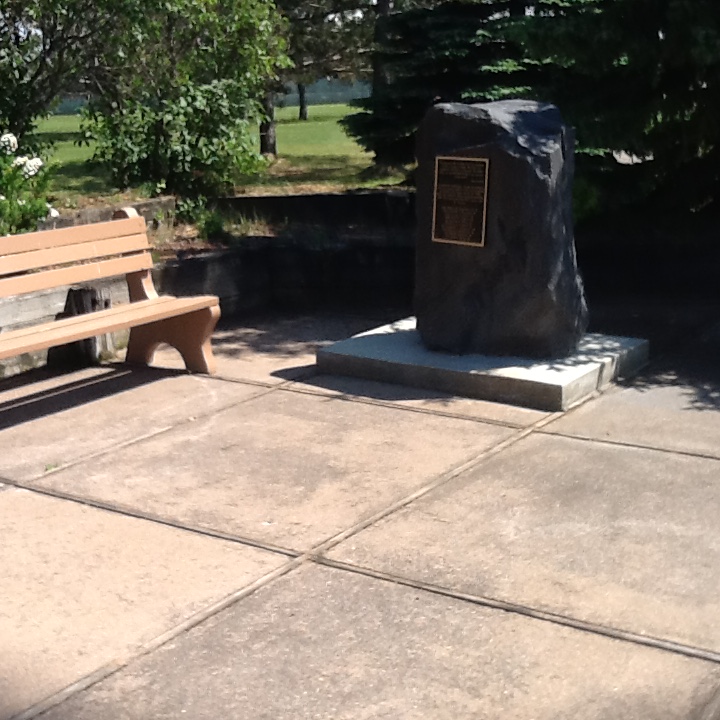
Primary Sources
- Conversation with Andrea Valiton, Beth Brackney Toy, and Julie Rometti-Llewellyn. E-mail interview. 16 Nov. 2016.
- Interview with Scott Harris, CMSgt (Ret). E-mail interview. 14 Nov. 2016.
- Rometti-Llewellyn, Julie. Original Crew E-180 Memorial. 1989. Marquette, MI. KI Sawyer AFB.
Secondary Source
- 46th Air Refueling Squadron Association 2016. 46th Air Refueling Squadron History.
- Aviation Safety Network 2016. ASN Aircraft accident Boeing KC-135A-BN Stratotanker 63-7990 Abilene-Dyess AFB, TX (DYS).
- Associated Press 1989. 19 are killed as Air Force Jet Crashes on Take off in Texas. New York.
- Dodge, B. O. “THE PLANTING OF TREES AS WAR MEMORIALS.” Torreya 19.2 1919: 34-36. JSTOR.
- “Historical Snapshot: KC-135 Stratotanker.” Boeing: KC-135 Stratotanker. Boeing, n.d.
- “KI Sawyer History.” History | K.I. Sawyer Air Force Base. KI Sawyer Heritage Air Museum, n.d.
- Mayo, James M. “War Memorials as Political Memory.” Geographical Review 78.1 1988: 62-75.
- Tall, Benita. “Here Come the Jets!” The Science News-Letter 74.12 1958: 186-87. 13 Nov. 2016.
- United States. National Park Service. “National Mall and Memorial Parks: History & Culture.” National Parks Service. U.S. Department of the Interior, n.d.
- Vick, Bob 2015. KC-135 Crew E-180 Memorial Fundraiser: Remembering Those Who Were Lost.
